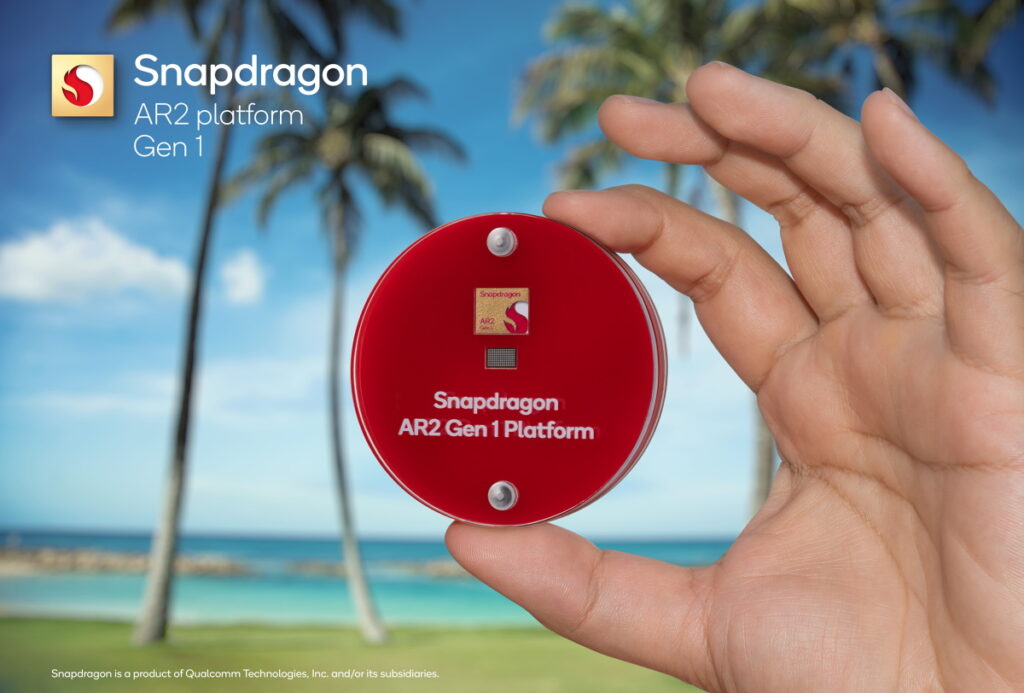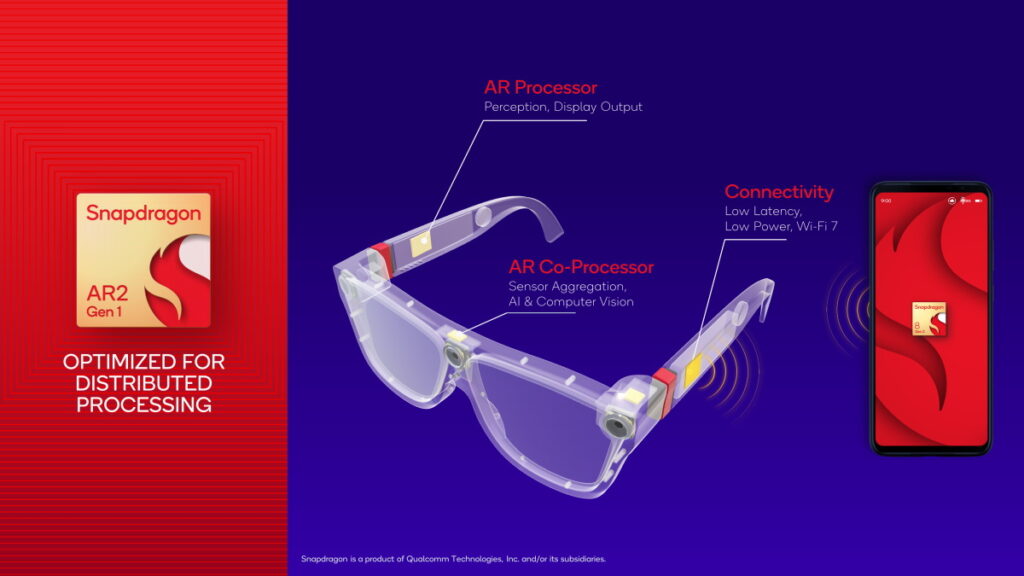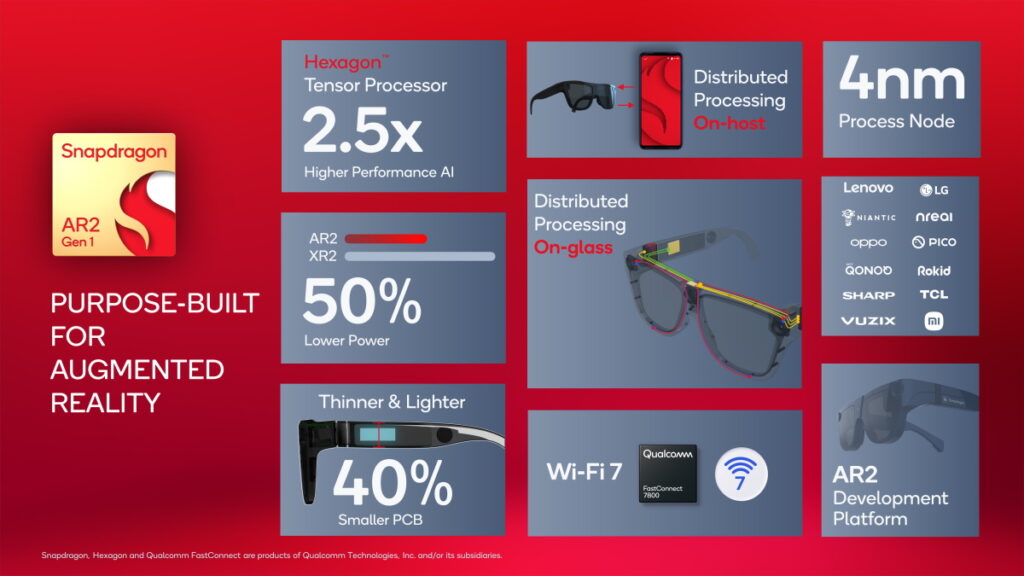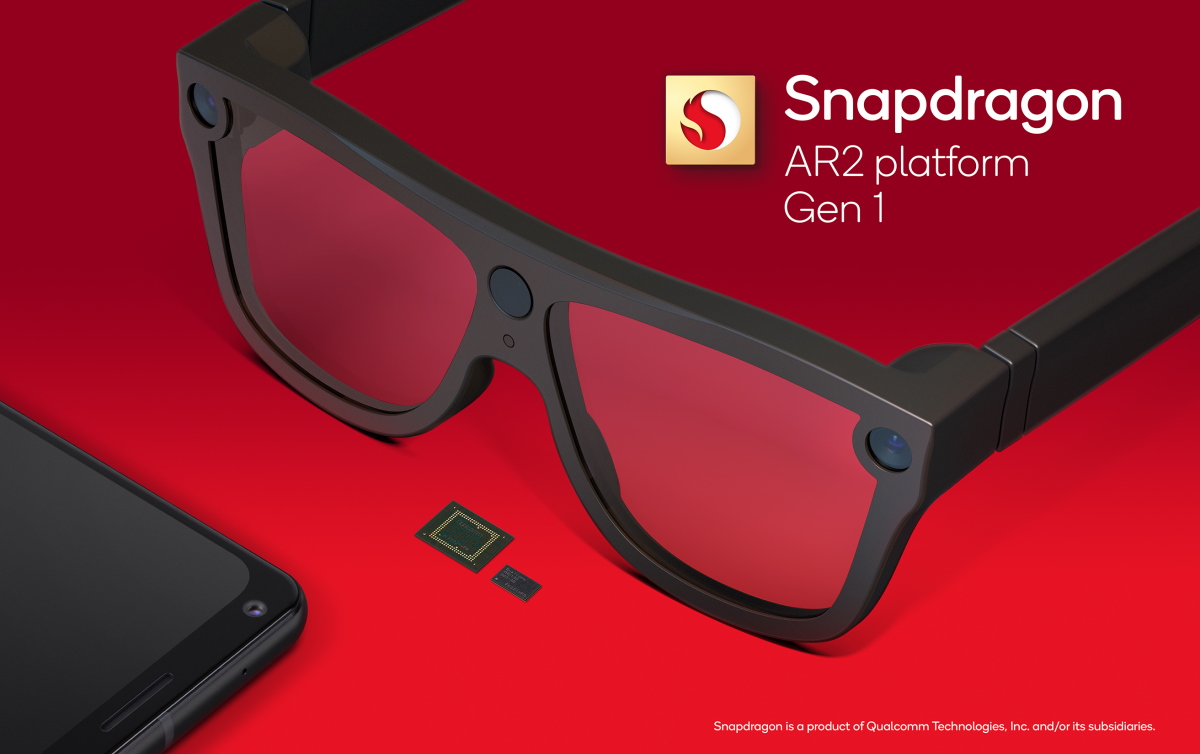If the first day of the Snapdragon Summit were mainly about the mobile space mainly through the official unveiling of the Snapdragon 8 Gen 2, Qualcomm has reserved the second day for things that are beyond mobile. One of them is the extended reality (XR) area which involved the announcement of the Snapdragon AR2 Gen 1 (AR2G1) augmented reality platform.
The company claimed that the new AR2G1 is the world’s first purpose-built platform for head-worn augmented reality (AR) devices. Just to be clear, this is a different solution than the existing Snapdragon XR2 Gen 1 and XR2 Plus Gen 1 which were primarily designed for mixed reality (MR) and virtual reality (VR) headsets.

The exact details of the new multi-chip solution are not available at the time this article is published but we were told that the AR2G1 was built using 4nm process node and able to deliver 2.5x more AI performance than the XR2G1 while consuming 50% less power. The AR2G1 consisted of three different chips with one of them being the AR processor.

Aside from that, the AR2G1 also has an AR co-processor that is designed to churn through all the data from cameras and sensors within the AR device while enabling its eye tracking and iris authentication. Essentially, the AR co-processor’s main job is to optimize workload only at the area that the user is looking which helps tone down the AR device’s power consumption.
AR2G1’s third chip comes in the form of FastConnect 7800 which is the same connectivity system inside the equally new Snapdragon 8 Gen 2 SoC. This means future AR2G1-based devices are able to support Wi-Fi 7 and it also helps ensure that the latency between the AR device and host device remains under 2ms.

In terms of availability, there is no straightforward answer for AR2G1 though as Qualcomm is currently working with multiple OEMs to deploy on their devices and the development stage that they are on varies from one partner to another. Nevertheless, there are plenty of them around including Lenovo, LG, Nreal, OPPO, Pico, QQNOQ, Rokid, Sharp, TCL, Tencent, Vuzix, and Xiaomi as well as the folks behind Pokemon Go, Niantic.
Follow us on Instagram, Facebook, Twitter or Telegram for more updates and breaking news.


